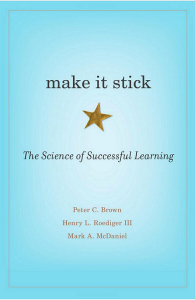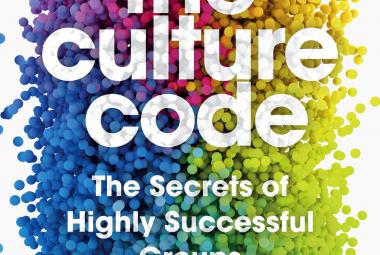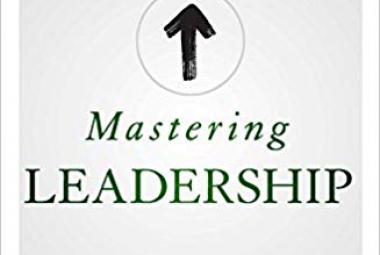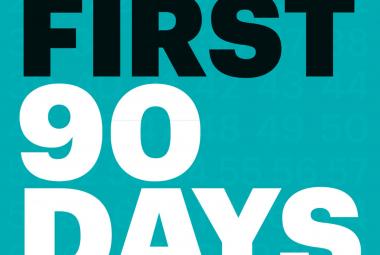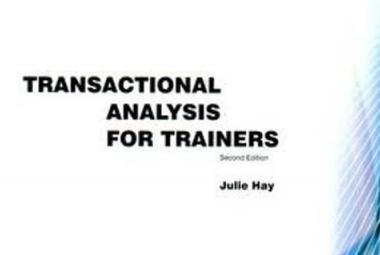In their book make it stick, Brown, Roediger and McDaniel describe how we learn best, based on scientific research. The reason why this book is best seller is because this is not the way you think you learn best, neither is it the way students are taught to learn at school. This book reveals how you can improve your own learning, and if you teach, how you can improve your teaching.
This article first describes the traditional theories on how to study, which are proven not to be successful for long term learning. Then, it describes the learning methods that do work. Finally, this article highlights some things you can do as a trainer or teacher, to make your content stick better with your students.
Lets start with the THEORIES ABOUT LEARNING THAT ARE NOT SCIENTIFICALLY PROVEN. The authors describe a number of methods that do not affect the level in which content is remembered at the long term.
The first of them is rereading text. Even though 80% of students use rereading as the number one study method when they are studying for an exam, it has never been scientifically proven that this method helps you to understand the content of what is being read. The reason for this, is that that familiarity with a text is not the same as understanding its underlying ideas. It has also been proven, that rereading a book does not influence the amount of content you will remember of it on the long term. On the short term, like the day after, you do remember a little bit more, but for the long term, rereading has hardly any impact.
A second learning theory that has never been proven is the impact of different learning styles. Of course, you can have a preference of how you would like to have your material presented, for instance by reading or listening, but the problem with just the style of presenting is similar as the problem with rereading: changing the way content is presented does not necessarily improve the way you understand the thinking behind the content.
Finally, the familiar to almost all cramming the night before an exam has proven not to be of any effect on the long term memory. A study showed that 2 days after an exam, the people who had been cramming had already forgotten 50% of the content that was tested. The students who used the methods of learning described below only forgot 13% of the content after two days.
Fortunately, the authors also describe STUDYING METHODS THAT DO WORK.
The first tactic is called elaboration and by that, the authors mean that you have to think about what you have just read, what it means to you, and how it fits into all the other things you already know. The better you connect the new content to things you already know, the better you will remember the new content.
The second tactic is reflection. It has been proven, that actually thinking about what you have learned earlier has a better impact on long term memory than simply rereading the same content, even if you do not remember that much of it. This is where a nice learning paradox comes in: the more difficult it is to remember what you have read before, the better you will remember it on the long run.
Method number three is testing your knowledge. The authors describe, that when a group of students were tested 3 times during classes, they scored a full point higher on their exams than the students who had not been tested throughout the semester. The students who were tested also ranked the quality of the classes higher.
Fourth, the authors describe the mixing of problem types as successful learning strategy. Traditionally, different type of problems are explained to the students one by one, a chapter for each type. Unfortunately in real life, problems do not come sorted in a specific order, and neither are they quizzed in order in the exam. The authors describe how students who practiced problem solving while mixing the different types of problems scored lower on the short term of the testing (60% correct compared to 89%), but on the long term, they scored much better than the students who had been dealing with the different types of problems one by one (63% correct compared to 20%).
The final tactic that the authors describe to improve learning is called spacing, which means you think about a topic a couple of times spread out in time. Discussing, elaborating and testing content that was discussed a couple of days ago has a positive impact on remembering it in the long term.
So, what can we learn from all this? The authors describe a number of tips on HOW TO IMPROVE THE WAY YOU TEACH using the methods described above.
The first tip has to do with elaboration. As a teacher or trainer, you can hand out the assignment to create a summary on what the students have learned the last class, or have them draw a mind map, or even a sketch. Next to the fact that students get more familiar with the content of the course, elaboration has another advantage: it does not make you tired as much, because you have to use your creativity,. This in comparison to having to reread a text, which usually leads to students feeling like ‘ their head is full’.
The second tip is to use the concept of testing to your advantage. Of course, you can quiz the group during class, and have the participants think about the content that you presented earlier. When you do a written test, make sure you tell the group beforehand and explain that testing is a proven methods that will support them in their learning. Even better than giving a way the correct answers after the test, is to form groups of people who answered to the questions differently and let them discuss to find out who had the correct answer. This will give them the opportunity to elaborate and reflect on their answers.
Make it stick is a book that includes many interesting findings and advice for both students and teachers, of which this article only covered a few. I conclude the same as most people who have written a review on this book by saying that I wish I would have learned these tricks when I was still in university. It would have saved me a lot of hours rereading…
Continue to:
The Coaching Habit - M.B.Stanier (summary)
REFERENCE:
Brown, P.C., Roediger, H.L., & McDaniel, M.A., Make It Stick - The science of Successful Learning, USA: Harvard University Press (order this book)


